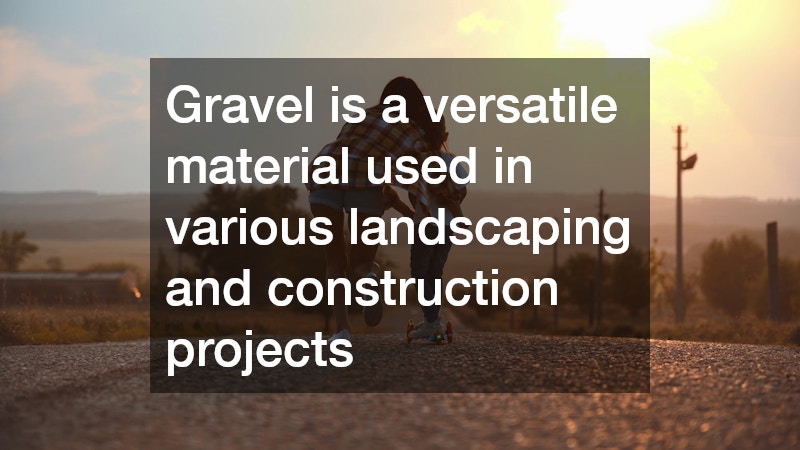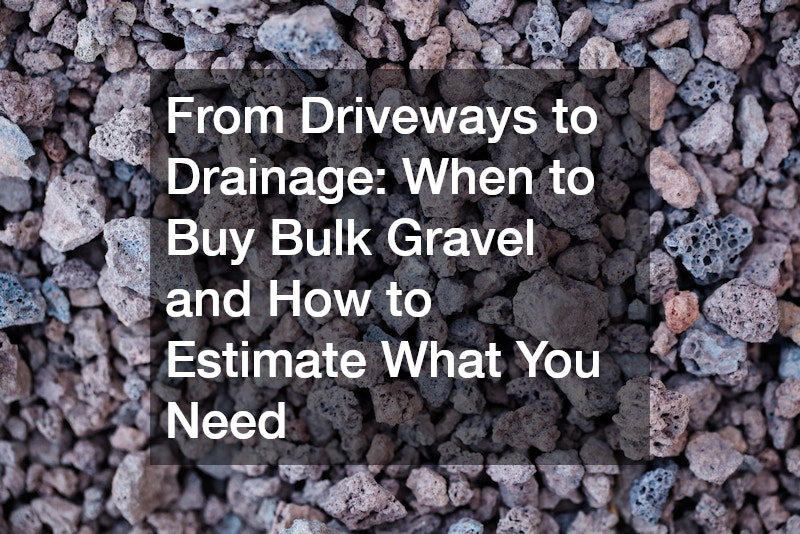From Driveways to Drainage: When to Buy Bulk Gravel and How to Estimate What You Need
Gravel is a versatile material used in various landscaping and construction projects, from creating durable driveways to improving drainage solutions. Buying bulk gravel can be cost-effective, but determining when and how much to purchase can be challenging. This article explores key considerations and offers guidelines to help you make informed decisions about bulk gravel purchases.
When is the Best Time to Buy Bulk Gravel?
Seasonal Considerations
The time of year can significantly impact the availability and pricing of gravel. During the spring and summer months, when construction and landscaping projects peak, the demand for gravel increases. This heightened demand can lead to higher prices and longer delivery times. Conversely, purchasing gravel in the late fall or winter can be more economical due to decreased demand.
In regions with harsh winters, gravel suppliers often experience a slowdown in orders, making it an opportune time for buyers seeking better prices. Suppliers may have excess inventory that they are willing to sell at discounted rates to clear space for other materials needed for the winter season. Therefore, planning your project around these seasonal fluctuations can lead to significant cost savings.
Another factor to consider is weather conditions, which can affect gravel delivery. Rainy seasons may lead to delays, as heavy trucks may not navigate well on soft or muddy ground, complicating the logistics. Planning ahead to avoid these seasonal challenges can ensure that your project remains on schedule and within budget.
Project Planning and Scheduling
Aligning your gravel purchases with your project timelines is crucial for avoiding unnecessary costs and delays. Begin by establishing a clear timeline for your project, understanding each phase and when gravel will be required. Early planning allows you to take advantage of slow demand periods to make your bulk purchase.
If your project is likely to experience delays, factor in buffer time for your gravel delivery. Supply chain disruptions, which are unpredictable, can influence delivery schedules and availability. Early ordering allows you to mitigate the risks associated with such disruptions. Additionally, coordinating with suppliers on accurate delivery timelines based on your project milestones ensures seamless progress.
Careful project scheduling not only streamlines your logistics but also enhances relationships with suppliers. By providing suppliers with accurate information and being flexible with timelines, you can often negotiate better terms and ensure priority service when required. This cooperation can be invaluable, especially during busy seasons.
Exploring Supplier Deals and Discounts
Timing your purchases to coincide with supplier promotions and discounts can lead to substantial savings. Bulk purchasing is often more economical, and many suppliers offer discounts for large orders. By communicating with suppliers and staying updated on their promotional calendars, you can leverage these opportunities to reduce costs.
Furthermore, establishing relationships with local suppliers can be beneficial in securing better deals. Regular customers are often given preferential rates or access to pre-season sales. Engaging with suppliers, whether through local supplier networks or online platforms, helps you stay informed of upcoming discounts and opportunities for negotiation.
In addition to direct supplier promotions, participating in cooperative purchasing groups can offer further savings. By joining forces with other buyers, you can achieve better pricing than ordering individually. These groups capitalize on collective buying power, which can be advantageous, particularly for large-scale projects.
How to Calculate the Amount of Gravel You Need?
Determining Project Dimensions
Accurately measuring your project area is the first step in estimating the amount of gravel you need. Begin by determining the length, width, and depth of the area requiring coverage. Convert these measurements into consistent units (commonly feet or meters) to simplify calculations.
These dimensions are crucial in calculating the volume of your project space. For standard shapes such as rectangles or circles, applying geometric formulas provides a precise volume. Complex-shaped areas may require breaking down the space into simpler sections for accurate calculations.
It’s essential to account for the intended use of your project area when considering depth. For instance, a driveway requires more gravel depth compared to a garden path due to the weight and use demands. Ensuring accuracy in measurement and depth factor is vital for calculating the correct gravel volume.
Using Gravel Calculators
Gravel calculators simplify the estimation process and reduce the risk of over or under-ordering. These online tools require you to input dimensions and automatically compute the volume. They are highly beneficial, especially for those unfamiliar with manual calculations.
When using a gravel calculator, ensure that you select the type of gravel you intend to use, as different types may have varying density factors. Such differences can impact the total volume needed. These calculators often include selections such as crushed stone or pea gravel, aiding precise calculation by adjusting for material specificities.
Convenience is a significant advantage of online calculators, offering a quick and user-friendly solution. However, verifying the results through consultation with suppliers or project professionals can further refine your estimates, ensuring they meet your project needs efficiently.
Allowing for Compaction and Settlement
When estimating gravel quantities, consider compaction and settlement as crucial factors. After gravel is laid and compacted, the volume reduces, requiring additional material to meet original specifications. Not accounting for compaction may lead to insufficient gravel coverage.
Understanding the compaction rate of your chosen gravel is essential, as it varies across different types. For example, crushed stone generally compacts better than rounded pea gravel due to its angular structure, impacting the quantity needed. Consulting experts or relying on supplier guidance can provide these crucial details.
Factoring in potential settlement over time is also vital, as gravel may shift or sink slightly with use, particularly under heavy loads. Allowing for an extra 5-10% gravel can accommodate these factors, preventing the need for costly repeat orders to maintain desired levels.
Conclusion
Whether for a new driveway, improved drainage, or a beautiful landscape feature, bulk gravel is an essential component. Understanding when to buy, how to calculate needs, and selecting the right type can save time and money while ensuring successful project completion. With the right preparations and resources, anyone can confidently embark on their gravel project.

